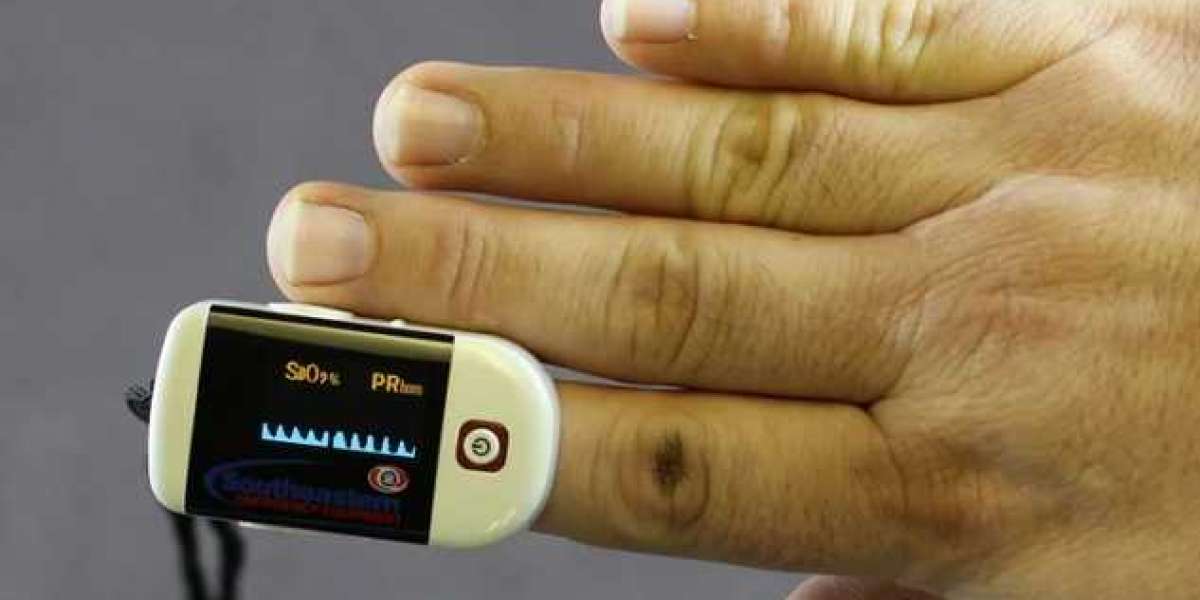The principle of the current pulse oximeter is to record relatively weak photoplethysmograph(PPGs) from the low-density vascular tissue with the sensor.
If we have a design, which can get strong enough photoplethysmographs, we can deal with weaker and frequently disturbed PPGs with the algorithms. Then it will completely change the pulse oximeter measurement.
Current sensors consist of a single light detector, a pair of red and infrared light-emitting dipoles (LEDs) that detect the reflected light through the skin. Such spo2 sensors rely on the probe placement location of tissue. It can lead to an error reading if there is movement between the sensor location and the tissue. The photodetector must detect the light emitted from the central area to capture most backscattered waves, so a new photo reflection sensor is designed, including three LEDs and two continuous light detection rings, which are symmetrical and equidistant in the center of the LEDs. Compared to existing photodetectors, this new configuration enables more comprehensive photoplethysmography detection. Although the structure is more complex, it can enhance the ability to collect additional backscattered waves far from the photodetector region.
The relation between spo2 reading and the correct use of the sensor
Blood volume changes in different tissues because of the number of blood vessels and distribution on the skin surface. In addition, the contact of the sensor with the skin will affect the blood distribution and the light scattering effect on the skin surface.
The new multi-wavelength sensor has a unique geometry that improves the ability to discriminate light emissions and eliminates relatively weak photoplethysmographs caused by human movement or hypersensitivity, thereby improving the accuracy of oxygen saturation readings.
Masimo Signal Extraction Technology
Masimo signal extraction technology differs from traditional methods.
It is recognized that the relatively low-pressure venous blood is quite sensitive to disturbing patient activity. For example, for the finger, the venous blood is changeable easily when the patient moves, resulting in noise in the physiological information. In addition, venous blood is a strong light absorber. So venous blood can have a significant noise source effect on the total light intensity when the finger is in movement.
With the determined noise floor, a self-tuning noise canceller can be used to deal with the effects corresponding to the venous blood noise source
The red-light intensity Ird and the infrared intensity Ir in the physiological signal are respectively composed of the useful signal part (Srd, Sir) and the useless signal part (Nrd, Nir). In the oximeter, there are two signal parts (Srd, Sir), and they are proportional to each other, and the ratio is the arterial light intensity ratio Ra. Therefore, the red light-generated physiological signal subtracts the product of the infrared-generated physiological signal to the ratio of the arterial light intensity is the reference signal with only the noise part, the noise reference signal N.
The spo2 DST technique can distinguish the light intensity corresponding to arterial oxygen saturation (ra) from the light intensity ratio (rv) corresponding to the estimated value of venous oxygen saturation and then calculate the two light intensities ratios (ra and rv). And then calculate the base signal with each selected ratio.
The process of Masimo extraction technology:
1, Scan each light intensity ratio corresponding to oxygen saturation from 1% to 100%;
2, Calculate the reference signal for each light intensity ratio and measure the output power of the self-tuning noise canceller for each reference signal
3, Using the Masimo extraction technology, the oximeter can calculate the arterial oxygen saturation value without first extracting or determining the discrete arterial oxygen saturation data in the physiological information. And it has nothing to do with the calculation of the heart rate.
Another advantage is that it can be activated before getting data. Therefore, even if the patient has been active before measurement, the arterial oxygen saturation, and heart rate can still be monitored.






